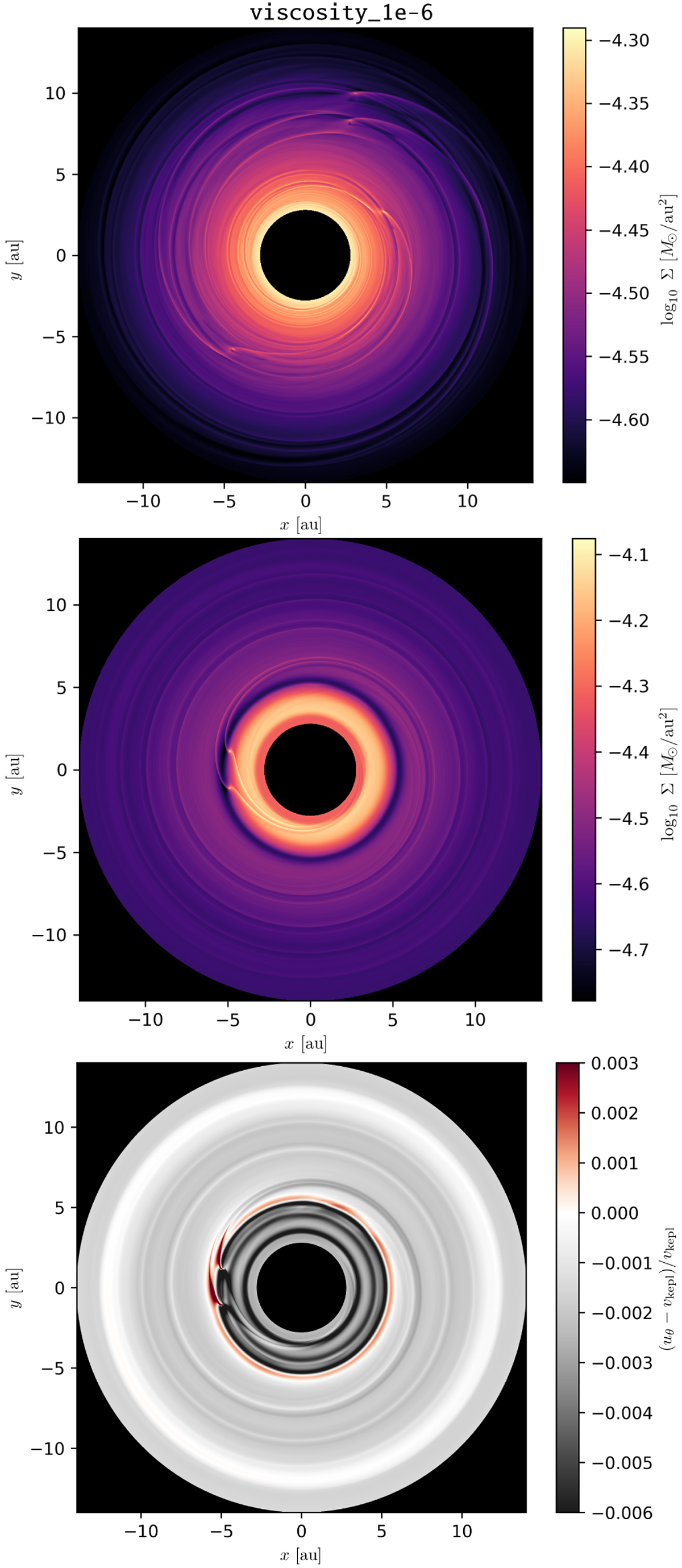Fig. 12

Surface density Σ for the simulation with 10 times smaller viscosity ν; the situationshort after the beginning at t = 100 Porb (top panel), and the final state at t = 8000 Porb (middle panel). The structures are initially more pronounced compared to the nominal case, because perturbations of the low-viscosity gas spread more slowly. The outcome is a massive co-orbital that migrates towards the inner boundary. The density contrast between Σ interior and exterior to the co-orbital is about 2; the disc is optically thick in both cases. The corresponding azimuthal velocity uθ of pebbles (bottom) is compared to the Keplerian velocity vkepl. Just outside the co-orbital pair, the dimension-less ratio (uθ − vkepl)∕vkepl is positive (uθ super-Keplerian) and a pebble isolation develops.
Current usage metrics show cumulative count of Article Views (full-text article views including HTML views, PDF and ePub downloads, according to the available data) and Abstracts Views on Vision4Press platform.
Data correspond to usage on the plateform after 2015. The current usage metrics is available 48-96 hours after online publication and is updated daily on week days.
Initial download of the metrics may take a while.


